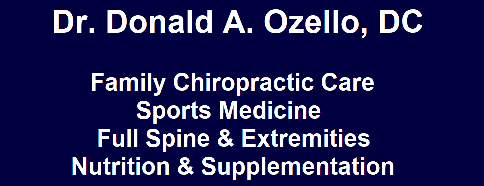Perform squats as the focal point of your strength training to become stronger. Learn proper technique and establish sound training practices by working with a knowledgeable strength and conditioning coach or a certified fitness trainer. A detailed warm-up and cool down are essential for optimizing results and minimizing injury risk. Sufficient rest and recovery between training sessions is essential to optimize training.
In part one of this article series “Squats for Athletes” I wrote about proper squatting technique, squatting safety, stance width, depth, spinal decompression and knee health. In part two, I wrote about different types of squats and the advantages of each type. In the third installment I discussed squatting routines for strength, endurance, heart health and lung power. In this article, the fourth and final segment of “Squats for Athletes” I discussed exercise preparation, proper rest and recovery, and warm-up and cool down methods.
Preparation: If you are an absolute beginner or are restarting an exercise program after a long lay-off, I recommend you see a physician for an examination. Work with a strength and conditioning coach or a certified personal trainer to learn proper technique and formulate a sound training program.
I suggest you educate yourself on health and fitness by asking your doctor, coach and trainer as many questions as possible. Don’t be afraid to ask a question, make a suggestion or provide feedback. Your feedback helps the trainer help you produce heightened results. Educate yourself about health, fitness, nutrition and recovery. Use your newly discovered knowledge to boost your training results and improve your athletic performance.
Warm-Up & Cool Down: Just as a proper warm-up and cool down are important in running, they are also important in weight training, especially squats. The knees, pelvis, hips and spine need to be prepared for squatting to optimize results and minimize injury risk.
Start with dynamic motions for five minutes to bring blood flow to the working muscles and joints. Emphasize the spine, pelvis, hips, glutes, hamstrings, quadriceps and calves.
Begin with light weight and gradually increase resistance. For example, if your heaviest set of anchor squats is thirty repetitions with fifty pounds. Execute twenty repetitions with twenty-five pounds in the first set. Next, use forty pounds for thirty repetitions. Then perform your most intense set. This simple example gradually prepares the muscles, joints, heart and lungs for the intensity of your heaviest set.
A quality cool down is vital to prevent injuries. After squatting spend several minutes performing dynamic motions and static stretches to increase flexibility and decrease muscle tension.
Rest and Recovery: Squats are a demanding, weight bearing activity that entails a large amount of hip and knee motion.
The body’s muscles and joints require time to recuperate from intense training especially squats. Allow your body sufficient time to recover between workouts.
If running is the main focus in your exercise routine, I recommend you perform squats once a week and run several times a week. Give yourself two full days rest between your squatting day and your most intense running day. This should provide sufficient time for the muscles and joints to recuperate.
The main purpose of squatting for athletes is to become a higher performing athlete therefore do not let muscle soreness and fatigue from squatting interfere with your sports specific training. Two full days of rest will allow your body time to recover from an intense squat workout. Use active recovery techniques on the off-training days. Active recovery includes Chiropractic care, stretching, foam rolling, massage, good nutrition, rest and sleep.
Conclusion: Exercise can produce remarkable results. Squatting is a tremendous exercise. Devise an intelligent squatting routine to become a higher performing athlete. Execute a comprehensive warm-up and cool down during every workout. Provide your body adequate rest time between workouts to decrease injury risk and heighten results. Utilize squats to improve your sports specific training. Achieve your health, fitness and athletic goals with an intelligent exercise program that includes squats.
Dr Donald A Ozello DC of Championship Chiropractic in Las Vegas, NV
Web Site: http://www.championshipchiropractic.com/
Blog: https://www.championshipchiropractic.com/wordpress/
YouTube: https://www.youtube.com/user/drdozellodc/videos
Twitter: https://twitter.com/drdozellodc
Facebook: https://www.facebook.com/Championship-Chiropractic-280141628688300/
LinkedIn: https://www.linkedin.com/in/dr-donald-a-ozello-dc-716b3233
“Running: Maximize Performance & Minimize Injuries” https://www.amazon.com/Running-Performance-Chiropractors-Minimizing-Potential/dp/1493618741
**Disclaimer: Always consult a medical professional before beginning an exercise program. Always work within your capabilities. Never perform an exercise that elicits or increases pain or symptoms. Reading this article and viewing the linked videos does not take the place of seeing a medical professional. Please visit a medical professional for evaluation, diagnosis & treatment.

